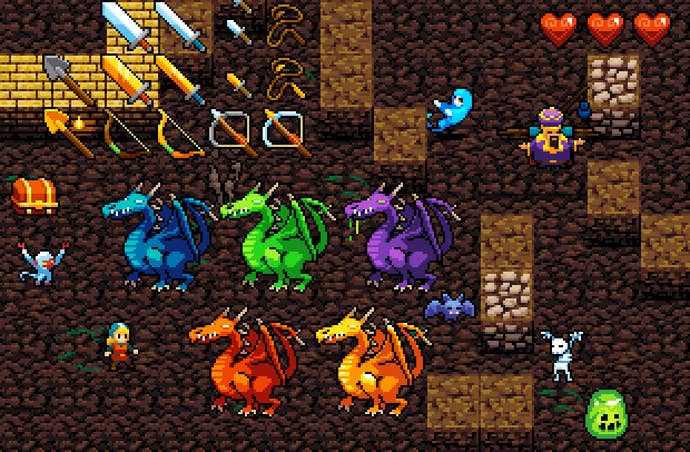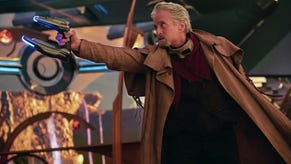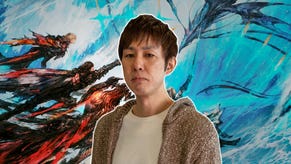Dance Yourself to Death With Crypt of the Necrodancer
Have you ever danced with the devil in the pale moonlight? We talk with programmer Ryan Clark about his music-based roguelike.
This article first appeared on USgamer, a partner publication of VG247. Some content, such as this article, has been migrated to VG247 for posterity after USgamer's closure - but it has not been edited or further vetted by the VG247 team.
A week ago I witnessed this magical gem of a trailer for the first time. Watch it and see if it hooks you like it did me.
Okay, you're still reading, so the trailer piqued your interest. Let's talk about Crypt of the Necrodancer.
I admit only a passing interest and understanding in "roguelikes". The genre is named after Rogue, a game released on Unix back in 1980, featuring procedurally-generated dungeons and repeated player deaths. A number of different series, including Blizzard's Diablo titles, the Mystery Dungeon games, Runic Games' Torchlight, and the indie hit FTL can be traced back to gameplay pioneered by Rogue. Of those titles, I've only spent a great deal of time with FTL and Torchlight 2. Diablo fans, please don't hurt me.
As shown in the trailer above, Crypt of the Necrodancer adds a twist to the roguelike genre with the addition of music-based gameplay. In the game, the player and enemies all move and attack to the beat of the song that's being played. If you try to move off the beat, you simply don't move at all. Only four keys are required: Up, down, left, and right. Attacking is accomplished by moving towards an enemy or an enemy moving towards you. To do certain special actions, you'll have to tap multiple directions at the same time, not unlike DDR.
Crypt of the Necrodancer is straight-forward roguelike with a beat and that's intentional on the part of the team behind the game, BraceYourself Games.
"I was thinking about roguelikes and how to make them more 'fair'. By 'fair' I mean that when your character dies, it should always be your own fault," explained programmer and creator Ryan Clark. "It should be due to some mistake you made, not due to an inescapable situation created by the game's random number generator. After you die, the cause of your death - and what you could have done to avoid death - should be fairly apparent. These are things that I feel would make roguelikes more enjoyable for me."
Clark said that games like Spelunky have moved player deaths away from random number hell by adding player skill to the equation, differentiating themselves from classic roguelikes like NetHack, which requires esoteric knowledge to become a "true master".
"I was interested in making something closer to a true roguelike, as opposed to the roguelike-likes Spelunky and FTL. There are certainly some action-y roguelike variants, but for some reason I didn't enjoy them as much as I would have hoped. The complete removal of 'turns' is a massive change, so I wondered what it would be like if the turns were of enforced length. In this way, the turn-based essence is retained, but the lack of time to think brings skill into the equation," he told me.

"Rolling that around in my mind for a while brought a realization: Moving with a fixed turn duration is a lot like moving to a beat! So I tried playing with a song that I had created and it was really fun. Then I tried playing with Thriller as the song, and it was amazing! Crypt of the Necrodancer was born."
I assumed the Crypt of the Necrodancer name predated the game's genesis since it's such an excellent pun, but Clark said the pun was "just icing on the cake."
"I already knew that the gameplay was fun, but when I came up with the 'Necrodancer' pun, I took it as a sign that I had to make this game," he joked.
Crypt of the Necrodancer doesn't have any levels, with players becoming stronger by finding or buying items. In classic roguelike style, death means you lose all your items. Permanent character boosts are obtained by freeing NPCs from within the game's procedurally-generated dungeons. Upgrades purchased from these NPCs in the game's main lobby will stick with you forever.
Part of the magic of making Necrodancer's gameplay based on music is the game changes when you use different songs. The Necrodancer team is creating its own original songs for the game with the help of composers Alec Holowka and Danny Baranowsky. The music in the trailer was done by Baranowsky, who's best-known for his work on Super Meat Boy, The Binding of Issac, and Canabalt. Each level has its own specific songs, with harder levels using faster and more complex songs. This complexity includes irregular beat patterns, like a boss fight where every eighth beat is a rest. Songs also determine when a level is over.
"You also asked what happens when a song ends: A trap door opens up beneath you and you fall to the next level," stated Clark.
Clark recommended that gamers play with the game's original soundtrack for the "true experience," but the game is open to using your own songs, like Audiosurf and Dejobaan's Drop That Beat Like an Ugly Baby. Score multipliers keep the game's difficulty at an even level: score penalties will be applied for slower songs and bonuses given for faster tracks.
Clark and the rest of the team at BraceYourself have been around the block before, having each developed indie titles at other developers.
"Good roguelikes are, for me, the best way to elicit that feeling of childlike gaming joy"
"I previously co-founded a company called Grubby Games in 2004," said Clark. "In 2009 Big Fish Games acquired Grubby. In 2013, I went indie again and was fortunate enough to find an amazing group of people to work with for this project. Ted Martens made Pixel Fireplace, Hexels, and Dinowaurs. Alec Holowka made Aquaria, Planet Punch, and the music for Offspring Fling. Evan Balster made SoundSelf and Infinite Blank. Jesse Turner made ShellRazer. Kevin at PowerUp has worked on tons of games!"
Necrodancer plays up its music game heritage by supporting DDR pads, which surprised me, but Clark says original DDR players are "numerous" and "avid." I also asked about possible Vita support for the game, as Sony's scrappy little portable has seen a resurgence as the home for indies.
"We love the Vita, too! No comment beyond that," replied Clark with an emoticon smile.
As we wrapped up our interview, I asked Clark why he returned to the roguelike genre given the choice. Clark said that the genre simply brings him back to his childhood.
"Roguelikes make me feel like I'm a kid again," he told me. "As a child I poured countless happy hours into the original Rogue -- I can remember the excitement I felt each time I started a new run. The difficulty level of most roguelikes also evokes the difficulty of the classic NES games I played when I was young. Good roguelikes are, for me, the best way to elicit that feeling of childlike gaming joy."
To me, repeated deaths due to gut-wrenching difficulty is a odd way to reach childhood, but I hope the team can pull it off with Crypt of the Necrodancer. It looks like a ton of fun. The is expected to be released sometime in 2013.









_ddwYK80.png?width=291&height=164&fit=crop&quality=80&format=jpg&auto=webp)
